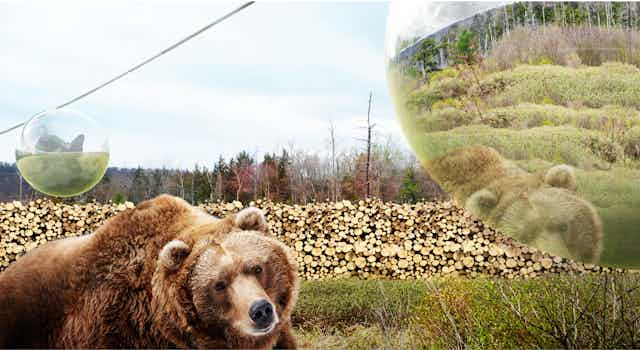The Sydney Opera House is proof that Danish architects like to do things differently. As do some Danish zoos, who kill giraffes for conservation. And now there is a Danish proposal to create a zoo there without cages for the animals – a Zootopia where the animals will roam free and humans will observe them from various enclosures.
This in itself is nothing new or radical, but finding the right way to engage zoo visitors is vital for global conservation efforts so it’s worth examining how zoos can manage that.
Bars on animal cages are controversial because they remind humans of prisons. This is anthropocentric, however – to monkeys, the bars represent climbing structures. Some barred animal enclosures, such as the gorilla housing at Howletts Zoo, are ugly to the human eye but highly functional for the occupants.
Education about conservation
But we can question what message the human visitor takes home. It is interesting to reflect that some zoos referred to their animals as the inmates until the 1960s.
Modern zoos justify their existence based on their contributions to animal conservation, research and public education. Arguably the most important role of zoos is in public education – 10% of the world’s population visits a zoo every year and no other type of institution has such potential to globally educate people about the importance of conservation.
Informal zoo education is just as important as the more formal education visitors get from listening to talks and reading signs on their visit. The impressions that a visitor leaves a zoo with are highly important. A significant factor affecting this is enclosure design, this is why good modern zoo designers pay great attention to visitor psychology.
History lessons
The original barless zoo was developed in 1907 by Carl Hagenbeck at Tierpark in Hamburg. Hagenbeck, an animal collector, loved the natural landscapes where he captured his zoo animals and wished to show the animals to the public in a natural manner. The animals were kept in their enclosures by hidden moats. His zoo was a radical change from small barred enclosures and gave the public an appreciation of the animals in their wild context.
It was the birth of Safari Parks in the 1960s which really brought the zoo visitor close to the animals. Here the attraction continues to be the visitors’ closeness to a lion or giraffe. Rather like a rollercoaster, the thrill is a perceived one with your car window acting as an imperceptible barrier. But the problem is in conveying an effective education message when people are driving their own car. Plus, encouraging car use goes against the overall conservation message animal institutions should be telling.
Florida is home to Monkey Jungle a zoo where the humans are caged and the animals run free. It makes for an oppressive experience as a human. While it gave me an insight into what it must be like for an animal to live in a small cage, I felt it must be difficult to get over an educational message about conservation in such an environment.

The Netherlands have Apenheul Primate Park, a zoo where neither animals nor their human visitors are caged, but instead they share the same woodland space. I remember my visit to this zoo as very enjoyable – it was great fun to see woolly monkeys running across the heads of the visitors and squirrel monkeys playing with children in their pushchairs. But research shows that when humans have direct contact with wild animals they tend to see them as a child and this distracts from the important conservation message the zoo is trying to impart.
In the UK there is Trentham Monkey Forest, which of the three I prefer. Here visitors and monkeys share the same space, but there are human guides to prevent direction human-monkey interactions and to educate the public about the animals. I think this institution has got it right – the visitor has the wow factor of being close to animals in a natural environment and receives good quality information about conservation.
Zootopia?
All this raises the question, what is novel about the Danish proposal for Zootopia? There are two things. One is the integration of the public’s animal viewing areas into the landscape – to make them invisible to the animals.
The second is a series of futurist mirrored globes, which will allow visitors to float down a river to see the wildlife or be carried overhead on a cable car system. I have some reservations about this concept. The mirrored globes remind me of a cult 1960s TV series that was ironically called The Prisoner. To me this concept sounds like the visitors are voyeurs and does not acknowledge their part in the natural world.
Given the looming wildlife extinction crisis, it is more important than ever that zoos get the right message over to their visiting public. This requires balancing how we can learn about animals formally, as well as through the informal messages transferred through the experience of viewing animals.

